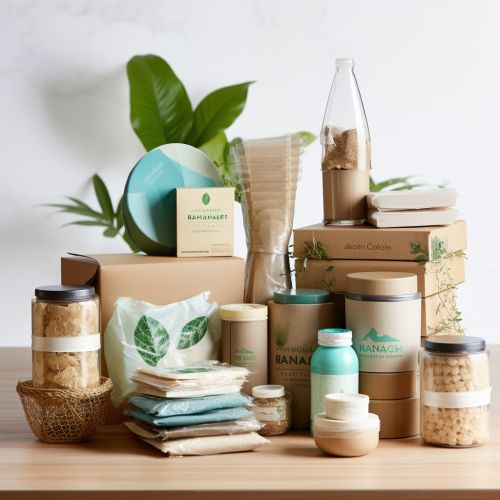Green Packaging
Introduction
Green packaging, also known as sustainable packaging, is a method of packaging that uses materials and manufacturing techniques to reduce its impact on the environment. This form of packaging provides for the efficient use of resources, minimizes waste, and is safe for individuals and the environment throughout its lifecycle.


History and Development
The concept of green packaging has its roots in the environmental movement of the 1960s and 1970s, when concerns about pollution and waste began to gain widespread attention. However, it was not until the 1990s that the term "green packaging" came into common use, as companies began to recognize the marketing potential of environmentally friendly products.
Types of Green Packaging
There are several types of green packaging, each with its own benefits and drawbacks. These include:
Recycled Content Packaging
Recycled content packaging is made from materials that have been recovered or diverted from the solid waste stream. This can include post-consumer recycled materials, which are materials that have been used and discarded by consumers, as well as post-industrial recycled materials, which are waste materials generated during manufacturing processes.
Reusable Packaging
Reusable packaging is designed to be used multiple times, often for the same purpose. This can include durable items such as glass bottles, cloth bags, and plastic containers, as well as pallets, crates, and other items used in shipping and logistics.
Biodegradable Packaging
Biodegradable packaging is designed to break down naturally in the environment, reducing the amount of waste that ends up in landfills. This can include items made from plant-based materials, such as cornstarch and mushroom mycelium, as well as items made from paper and other organic materials.
Benefits of Green Packaging
Green packaging offers a number of benefits, both to the environment and to businesses. These include:
Environmental Benefits
The primary benefit of green packaging is its reduced impact on the environment. By using materials that are recycled, recyclable, or biodegradable, green packaging helps to reduce the amount of waste that ends up in landfills. It also helps to conserve natural resources, as many green packaging materials are made from renewable resources.
Business Benefits
For businesses, green packaging can offer a number of advantages. These include cost savings, as many green packaging materials are less expensive than their traditional counterparts. Green packaging can also help businesses to meet regulatory requirements, as many governments are increasingly implementing regulations aimed at reducing waste and promoting sustainability.
Challenges and Criticisms
Despite its many benefits, green packaging also faces a number of challenges and criticisms. These include:
Cost and Availability
While some green packaging materials are less expensive than traditional materials, others can be significantly more costly. In addition, some green packaging materials are not widely available, making it difficult for businesses to adopt them.
Performance and Durability
Some critics argue that green packaging materials are not as durable or effective as traditional materials. For example, biodegradable plastics may not be as strong or long-lasting as conventional plastics, making them unsuitable for certain applications.
Greenwashing
Greenwashing is a term used to describe the practice of making misleading or unsubstantiated claims about the environmental benefits of a product or service. Some critics argue that many companies use green packaging as a form of greenwashing, to make their products appear more environmentally friendly than they actually are.
Future of Green Packaging
The future of green packaging looks promising, with advances in technology and changes in consumer attitudes likely to drive further growth in this field. Innovations in materials science, for example, are leading to the development of new types of green packaging materials that are both environmentally friendly and high-performing.
